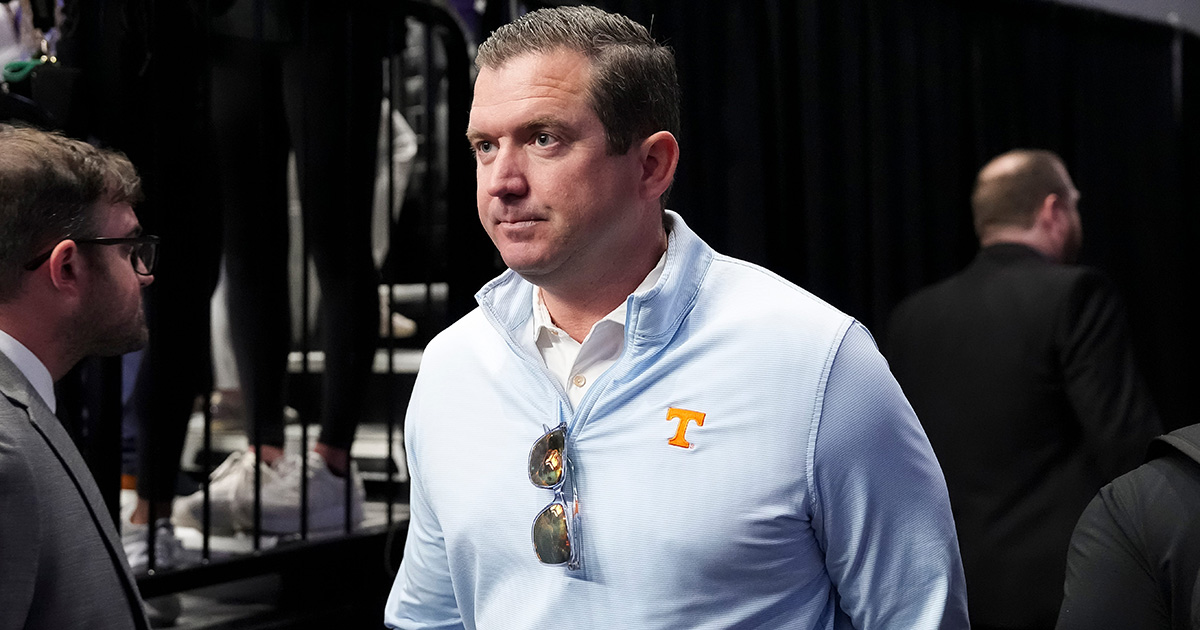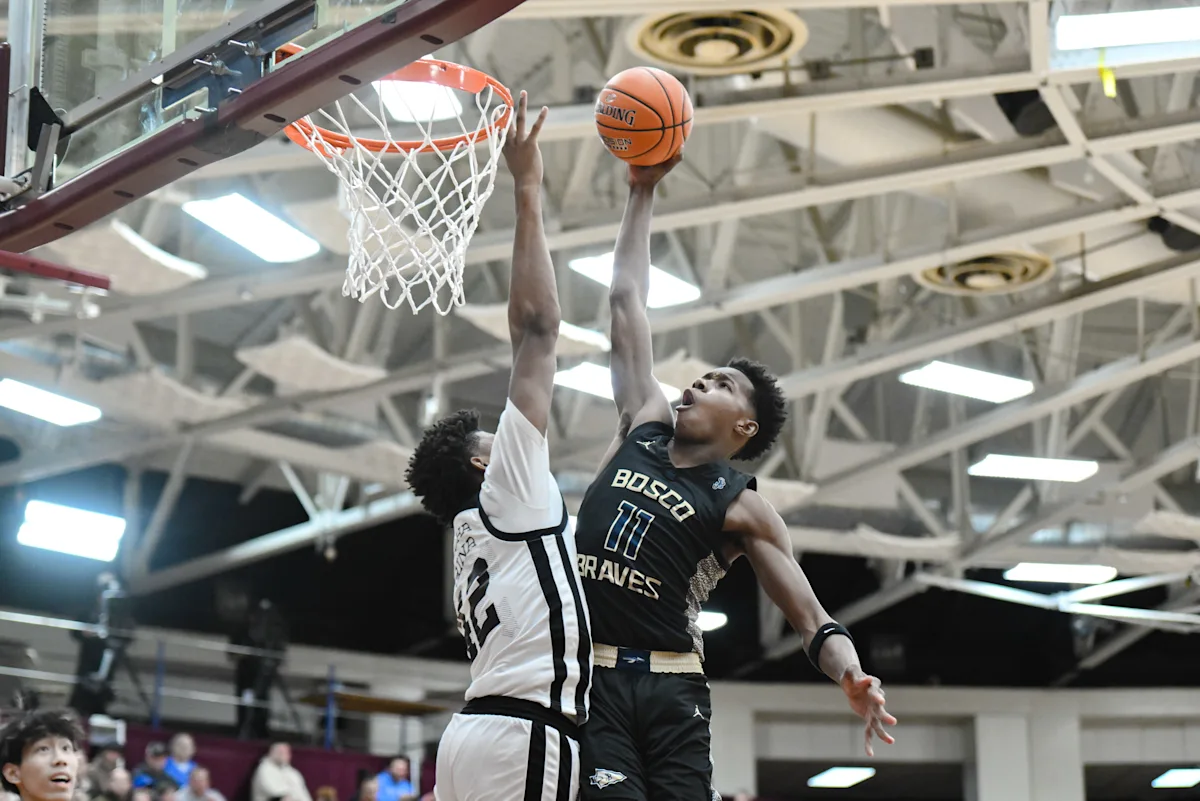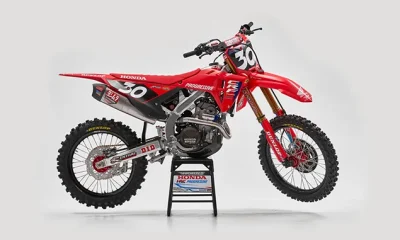NIL
Will NIL deals be better regulated in the future? 'At the end of the day, we're all looking for a …


MIRAMAR BEACH, Fla. — Along a carpeted hallway within the Sandestin Hilton, Brian Kelly is mid-conversation when a man interjects. “Hey,” the man said toward the LSU football coach, “you asked great questions today during our presentation!”
The man continued onward, leading a team of about a half-dozen people through the lobby of this place. They are members of the Deloitte leadership and implementation team operating college sports’ new NIL clearinghouse dubbed “NIL Go.”
Presenting in front of SEC coaches here on Tuesday — a question-and-answer session too — Deloitte representatives walked them through the intricacies and concepts of the much-ballyhooed clearinghouse, the industry’s new, somewhat controversial method to prohibit booster payments to athletes.
While the presentation garnered rave reviews, uncertainty and doubt still lingers from coaches and others on the clearinghouse’s legal sustainability and enforcement method.
There’s so much uncertainty, says Georgia coach Kirby Smart, that some schools are promising high school recruits and transferring players third-party NIL deals as part of their compensation package despite an important fact: None of those deals can be approved by a clearinghouse that hasn’t fully launched.
But more concerning, says Smart, is that some school-affiliated, booster collectives are currently compensating high school players — upwards of $20,000 a month — to remain committed and eventually sign with their school.
“Teams that are unusually good at recruiting right now are doing it. Kids are getting money, but if you decommit, you owe that money back,” Smart said. “These are high school kids getting money from an entity not affiliated with the university but is a collective of the university.”
Pressed to identify the schools, Smart said none of them are in the SEC, but the schools “are signing kids [to contracts] right now and paying upfront through an outside collective.”
It is the latest maneuver from athletic departments to take advantage of this murky, unregulated space as college sports transitions the way in which it compensates athletes — from booster-backed collectives to direct school revenue sharing, a move scheduled to be finalized July 1 if the House settlement is approved.
In the meantime, it is a free-for-all. But not for long, says Kelly.

Three days after the settlement is approved — if it is approved — the “NIL Go” clearinghouse is expected to begin processing athlete NIL contracts. Athletes must submit to the clearinghouse all deals valued at more than $600. Deloitte is using a fair market value algorithm to create a “compensation range” for NIL deals to assure they are not the fabricated contracts that boosters have struck with athletes for years.
Smart expects a “mass run” on submissions to the clearinghouse from schools attempting to test the entity to determine just “how much can I get outside the cap,” he said.
“Every team is going to put pressure on Deloitte to say, ‘I need to know! I’m promising this money outside of the cap!’” Smart told Yahoo Sports.
It could get tricky.
The officials from the Deloitte-run clearinghouse “NIL Go” — the centerpiece of the new enforcement entity, dubbed the “College Sports Commission” — is sharing data with coaches and athletic directors, including that 70% of past deals from booster collectives would have been denied. Deloitte also shared that about 80% of NIL deals with public companies were valued at less than $10,000 and 99% of those deals were valued at less than $100,000 — figures that suggest the clearinghouse threatens to significantly curtail the millions of dollars that collectives are distributing to athletes.
“If you got some mucky deals going on right now, you’d better be careful,” warned Kelly. “These deals have got to be for a valid business purpose. A lot of [previous] deals would have never gotten through.”
Even some of those currently being promised to recruits are at risk of rejection by the clearinghouse, coaches and administrators tell Yahoo Sports. For example, schools are guaranteeing to recruits that a portion of their compensation will be derived from third-party deals. An example of this might be a school guaranteeing a player an entire compensation package of $500,000: $300,000 from the school in revenue share plus $200,000 more in third-party endorsement deals that would, presumably, not count against a school’s revenue-share cap.
What if these third-party deals don’t get approved?
“That’s a risk,” Smart told Yahoo Sports. “Schools are going to either default on a contract, or have lied, or have been right and they gain a player for it.”
Such a contract is actually prohibited by new rules. Administrators learned of that during a call with House implementation committee members earlier this spring. No third-party NIL deals — including those from multi-media rights companies, apparel brands and corporate sponsors — can be guaranteed to athletes as part of their revenue-sharing contracts from schools.
However, uncertainty still lingers about all of this.
Many legal experts believe that the clearinghouse concept will trigger a bevy of legal challenges, but Texas A&M athletic director Trev Alberts believes in the new entity. He is one of 10 administrators from the Big Ten, Big 12, ACC, SEC and Pac-12 on the implementation committee.
“The reality is not a lot of people understand it or know about it, which leaves them to [say], ‘It won’t work!’ ‘It won’t be fair!’ ‘They don’t know what they’re doing!’” Alberts said from meetings on Tuesday. “The system has to be given a chance.”
For now, the system cannot formally launch until a decision from a California judge is made over the House settlement. A decision to approve or deny the settlement has, for nearly two weeks, been in the hands of Judge Claudia Wilken. She’s on her own timeline.
Meanwhile, Alberts acknowledges the jockeying from schools in an attempt to exceed the cap with third-party contracts.
“Everybody is trying to figure out fair market value NIL,” he said. “At the end of the day, we’re all looking for a competitive advantage. What is real is you have rev-share amount and scholarship amount, but what is undefined is how much fair market value deals can you get through NIL Go.
“The institutions most successful in getting that done, if you can organically grow your cap by $3-5 million per institution, you have more resources as others.”
An affiliation agreement being circulated throughout the power conferences requires schools to abide by the new enforcement rules, even if their state law contradicts them, and waives their right to sue over enforcement decisions. The agreement aims to, above all, protect the clearinghouse’s decisions, exempting it from lawsuits from schools and preventing those schools from circumventing the settlement’s compensation cap through affiliated entities such as collectives.
Alberts calls the agreement “critically important.”
“We are all defendant schools and conferences and you inherently agree to this,” he said. “I sat in the room with all of our football coaches, ‘Do you want to be governed?’ The answer is yes.”
NIL
Predicting landing spots for the Top 5 college football transfers (Dec. 17)

The College Football Playoff hasn’t quite started, but the transfer portal is heating up. The last week has seen some intriguing QB prospects make the portal dive. Here’s a rundown of the top five portal prospects (from On3.com’s rankings) and a quick thought on potential destinations for each.
Sam Leavitt, Arizona State QB
Leavitt remains On3’s top-ranked player in the portal. In 2024, he helped Arizona State reach the College Football Playoff by passing for 2,885 yards and 24 touchdowns and rushing for 443 yards and five more scores. His 2025 season was cut short by an injury in October, but in the portion of the year he could play, Leavitt passed for 1,628 yards and 10 scores in just seven games.
A week ago, we mentioned Indiana and LSU as possible destinations for Leavitt. Recent reports have confirmed both of those possibilities, with Oregon and Miami also mentioned. Of the four, it’s LSU that seems to have the dance card that’s filling up the quickest, with Trinidad Chambliss a potential nab for Lane Kiffin. Indiana and Oregon might now be the two most logical picks.
Dylan Raiola, Nebraska QB
Raiola was a five-star recruit for Matt Rhule, but after two up-and-down seasons, is looking to move on. He has passed for 4,819 yards and 31 touchdowns against 17 interceptions. Raiola showed improvement in 2025, throwing for 18 scores and six picks, but his season was shut down early due to injury.
Raiola has been tied to Louisville early in the process, as the Cardinals look to replace Miller Moss. Miami is another school frequently mentioned in conjunction with Raiola, as the Hurricanes look to replace Carson Beck, likely with a portal addition.
Brendan Sorsby, Cincinnati QB
Sorsby headed to Cincinnati from Indiana, leaving that program just before IU’s fortunes jumped. He has played well at Cincinnati, throwing for over 5,600 yards in the past two seasons with 45 touchdowns to 12 interceptions. Sorsby also rushed for over 1,000 yards and 18 scores over the past two seasons.
Early talk has linked Sorsby extensively with Texas Tech. No announcement has been made, but early indications are that he’s the likely successor to Behren Morton, and it’ll be a surprise if he ends up elsewhere.
DJ Lagway, Florida QB
A talented Florida passer, Lagway struggled with consistency in two up-and-down seasons as a Gator, ending up with over 4,100 yards and 28 touchdowns to 23 interceptions. His arm strength was legendary, but he often stacked bad decisions into some awful performances.
Lagway has been connected to Baylor early. His father played for the school, and it’s near his hometown. Another possibility is Clemson, where Lagway was recruited extensively and the Tigers could use a replacement for Cade Klubnik.
Drew Mestemaker, North Texas QB
Mestemaker exploded from out of nowhere. From being a high school backup to walking on at North Texas to becoming QB1 in 2025, he has always suprised. The redshirt freshman passed for 4,129 yards and 31 touchdowns this season.
Mestemaker might well follow his North Texas coach, Eric Morris, to Oklahoma State. A longer-shot possibility might be Tennessee, where Joey Aguilar will have to be replaced.

NIL
Tennessee AD Danny White calls for collective bargaining to fix college sports

The Transfer Portal has yet to open, but there are already players announcing they’ll be entering. Oftentimes, that’s as coaches tamper with other rosters and offer improved NIL or revenue-sharing deals. Now, Tennessee Volunteers athletic director Danny White believes he has a solution.
White took to Twitter on Wednesday. There, he quoted a post from Dan Wolken of Yahoo Sports, saying, “Everyone in college sports knows the solution, they just don’t have the stomach (yet) to execute it.” Wolken himself was responding to a complaint from Missouri head coach Eli Drinkwitz regarding tampering. That solution, which White wanted to highlight, is collective bargaining with the players.
SUBSCRIBE to the On3 NIL and Sports Business Newsletter
This,” Danny White wrote. “There is a pathway to build a much healthier environment for college athletics within the current laws of our country – it’s called collective bargaining. It will be complicated, hard, and likely not perfect, but it’s far past time that we roll up our sleeves and do the work.”
Collective bargaining is relatively common in the United States and in professional sports. In essence, it’s when representatives, usually a union, negotiate on behalf of a group of employees with the employer. They do so to come up with legally binding agreements on contracts, wages, hours, working conditions, and other considerations.
This would be a seismic shift for college sports because of the reality that collective bargaining fundamentally involves employees. That’s a status that colleges and the NCAA have been very tentative to give to student-athletes.
There are a few benefits to collective bargaining. In particular, as the NCAA has lost court battles, forcing it to allow things like NIL and unlimited transfers, this would be a legal agreement that would set some rules in stone. For instance, the maximum that a program spends, how often players can transfer, and multi-year contracts could all be negotiated.
Danny White is far from the only one who has suggested that collective bargaining could help college sports and tampering, in particular. When the Transfer Portal was cut down to one window, former player Chase Daniel called it smart and called for collective bargaining. ESPN’s Rece Davis did the same, calling for collective bargaining to end tampering.
Separately, 23 different Power Four GMs backed collective bargaining in a closed-door Athletes.org meeting in August. That group, which didn’t have any names attached, “agreed in unison” that it would be the best path forward for college sports.
For his part, Danny White has been out in the open, pushing for major changes in college sports before. In the past, he’s shared a proposal to establish a national organization to employ and unionize athletes. Of course, those changes still appear to be a long way away.
NIL
Big 12’s Brett Yormark says college athletics needs legislation that’s stalled in Congress :: WRAL.com

ARLINGTON, Texas (AP) — Big 12 Commissioner Brett Yormark says legislation currently stalled in Congress is needed to regulate college athletics and put a stop to what he essentially calls uncapped spending for name, image and likeness in football.
“Let me be clear about this,” Yormark said Saturday before the Big 12 championship game between No. 5 Texas Tech and 11th-ranked BYU at the home of the Dallas Cowboys. “The House of Representatives must do what is right for over 500,000 student-athletes and pass the SCORE Act. We must protect their future, their well-being and their fair treatment. They deserve action and not excuses.”
An effort backed by the NCAA, the U.S. Olympic organization and the White House faltered in Congress this past week, with opponents raising concerns over the wide-reaching power it gives the governing body of college sports and its most powerful programs.
The NCAA and Division I conferences portray the legislation as codifying the rules created by the multibillion-dollar lawsuit settlement that allows college players to be paid, providing clarity that supporters say is long-needed.
House Republican leaders had planned to push the bill to a final vote this past week. But those plans were abruptly scrapped after a procedural vote to advance the bill nearly failed.
Yormark said he supports the revenue-sharing model that is part of the settlement and agrees with those who believe NIL spending on top of the $20.5 million could be destabilizing for college sports.
UCF coach Scott Frost said on national signing day this week he thinks college football is “broken” because of unregulated spending on players.
In 2017, Frost led the Golden Knights to a 13-0 record without a bid in the College Football Playoff, which included four teams at the time, before getting fired in the middle of a fifth unsuccessful season at Nebraska, his alma mater. UCF, which was in the American Conference for Frost’s first stint but has since joined the Big 12, went 5-7 in his return this year.
“I will be spending time with the commissioners next week on some of the challenges and issues that face collegiate athletics, and we’re working through them,” Yormark said. “But I want you to understand that nothing’s broken in this system. And I respect Scott. But nothing’s broken. It’s all about progress, not perfection. There is no perfection in any industry, but there is progress, and we’re making great progress.”
Yormark is ready for 16-team playoff
Yormark said he believes in the playoff model with five automatic bids, even if it might cost the Big 12 a second team this season. That scenario also fits his opinion that the CFP needs to be 16 teams — with 11 at-large bids — instead of the current 12.
“I believe that on a percentage basis, when there’s 136 FBS (bowl subdivision) schools, the number 12 is too low,” Yormark said. “We need more access for all the right reasons. And I’m very consistent about that.”
Yormark indicated he doesn’t think the playoff will expand for 2026, even with an extra eight weeks to try to reach an agreement. The new deadline is Jan. 23.
“I can tell you we’re working on it, but we can’t rush it,” Yormark said. “A lot goes into it. It’s not just about picking a number. You also have to look through a filter and say what are the unintended consequences of those decisions, which is what the commissioners and myself are working on. I’m not overly optimistic we’re going to be able to change anything for next year. But we’re in the lab.”
___
Get poll alerts and updates on the AP Top 25 throughout the season. Sign up here and here (AP News mobile app). AP college football: https://apnews.com/hub/ap-top-25-college-football-poll and https://apnews.com/hub/college-football
NIL
Kentucky Basketball loses recruiting prediction for Christian Collins as NIL looms large

Collins, a 6-foot-8, 200-pound forward from Bellflower, California, is widely regarded as one of the premier frontcourt prospects in the country. His blend of athleticism, scoring ability, and defensive versatility made him a major priority for Kentucky head coach Mark Pope and his staff as they work to build future recruiting classes.
According to Jacob Polacheck of KSR, Collins’ recruitment is being heavily influenced by NIL structure and contract details, a growing trend at the top of the recruiting landscape. That reality was addressed publicly earlier this month by Kentucky athletic director Mitch Barnhart during Will Stein’s introductory press conference as the Wildcats’ new football head coach.
Barnhart pushed back strongly against the perception that Kentucky is at an NIL disadvantage, saying, “Enough about ‘have we got enough?’ We’ve got enough.” He also emphasized that Kentucky will not compromise its standards to land recruits. “We’ve got to do it the right way,” Barnhart said. “We’re not going to break the rules. That’s flat-out.”
While Kentucky no longer holds a crystal ball prediction for Collins, the Wildcats are not out of the race. However, his recruitment now appears far more fluid, underscoring the increasingly complex balance between elite talent, NIL expectations, and long-term program philosophy in modern college basketball.
NIL
Kentucky loses recruiting prediction for 5-star forward Christian Collins as NIL looms large

Kentucky Basketball suffered a notable recruiting setback this week as 247 Sports national analyst Travis Branham removed his crystal ball prediction for the Wildcats to land class of 2026 5-star power forward Christian Collins. Branham originally placed the prediction in early November, fueling optimism that Collins could commit to Kentucky as the early national signing period approached. That announcement never came, and momentum has since cooled.
Collins, a 6-foot-8, 200-pound forward from Bellflower, California, is widely regarded as one of the premier frontcourt prospects in the country. His blend of athleticism, scoring ability, and defensive versatility made him a major priority for Kentucky head coach Mark Pope and his staff as they work to build future recruiting classes.
Advertisement
According to Jacob Polacheck of KSR, Collins’ recruitment is being heavily influenced by NIL structure and contract details, a growing trend at the top of the recruiting landscape. That reality was addressed publicly earlier this month by Kentucky athletic director Mitch Barnhart during Will Stein’s introductory press conference as the Wildcats’ new football head coach.
Barnhart pushed back strongly against the perception that Kentucky is at an NIL disadvantage, saying, “Enough about ‘have we got enough?’ We’ve got enough.” He also emphasized that Kentucky will not compromise its standards to land recruits. “We’ve got to do it the right way,” Barnhart said. “We’re not going to break the rules. That’s flat-out.”
While Kentucky no longer holds a crystal ball prediction for Collins, the Wildcats are not out of the race. However, his recruitment now appears far more fluid, underscoring the increasingly complex balance between elite talent, NIL expectations, and long-term program philosophy in modern college basketball.
NIL
Former college football star QB shuts down career move amid political rumors

Less than two months after announcing his intention to run for lieutenant governor in Alabama, former three-time national champion Crimson Tide quarterback AJ McCarron has announced he will exit the race.
McCarron is seeking to rededicate himself to football, an effort that will require “100% of my focus, commitment, and attention that I was to give to the office of lieutenant governor, so it is time to end my campaign,” he said in a statement.
A historic career at Alabama
McCarron led the Crimson Tide to back-to-back BCS national championships in 2011 and 2012 and was part of the national title team as a redshirt player in 2009.
A native of Mobile, the quarterback became the first player at his position to win consecutive BCS titles and also received several of college football’s more prestigious awards, including the Maxwell, Johnny Unitas Golden Arm, and Kellen Moore Awards.
As a junior, McCarron established an Alabama record with 30 touchdown passes in a season, and broke Greg McElroy’s former record with 3,063 passing yards in a season during his senior campaign in 2013.
McCarron finished his Alabama career with a 36-4 overall record, completing almost 67 percent of his passes with 77 touchdowns and 15 interceptions.
McCarron in the NFL
The quarterback emerged as a fifth-round selection in the 2014 NFL Draft by the Cincinnati Bengals, playing as a backup for four years.
McCarron spent the next four seasons as a reserve first with the Oakland Raiders, followed by a stint with the Houston Texas, and finally the Atlanta Falcons.
From there, he played in the XFL with the St. Louis Battlehawks, a franchise that then moved to the United Football League.
McCarron’s political ambitions
The former quarterback star was running as a Republican for the second-highest office in his home state, a move he said was inspired by the murder of conservative political activist Charlie Kirk.
“Alabama’s conservative and cultural values are under attack from every direction,” McCarron said in his announcement for office.
“That’s why Charlie Kirk’s assassination affected so many of us so deeply. His example convinced me to get off of the sidelines, get into the game, and stand tall for our conservative beliefs.”
McCarron currently serves as a college football commentator as part of The Dynasty podcast, which he presents with fellow Alabama alum Trent Richardson and Crimson Tide broadcaster Chris Stewart.
More college football from SI: Top 25 Rankings | Schedule | Teams
Follow College Football HQ: Bookmark | Rankings | Picks
-

 Motorsports3 weeks ago
Motorsports3 weeks agoJo Shimoda Undergoes Back Surgery
-

 NIL2 weeks ago
NIL2 weeks agoBowl Projections: ESPN predicts 12-team College Football Playoff bracket, full bowl slate after Week 14
-

 Motorsports1 week ago
Motorsports1 week agoSoundGear Named Entitlement Sponsor of Spears CARS Tour Southwest Opener
-

 Rec Sports3 weeks ago
Rec Sports3 weeks agoHow this startup (and a KC sports icon) turned young players into card-carrying legends overnight
-

 Rec Sports3 weeks ago
Rec Sports3 weeks agoRobert “Bobby” Lewis Hardin, 56
-
Sports3 weeks ago
Wisconsin volleyball sweeps Minnesota with ease in ranked rivalry win
-

 Motorsports3 weeks ago
Motorsports3 weeks agoPohlman admits ‘there might be some spats’ as he pushes to get Kyle Busch winning again
-

 Motorsports1 week ago
Motorsports1 week agoDonny Schatz finds new home for 2026, inks full-time deal with CJB Motorsports – InForum
-

 Motorsports3 weeks ago
Motorsports3 weeks agoIncreased Purses, 19 Different Tracks Highlight 2026 Great Lakes Super Sprints Schedule – Speedway Digest
-

 Rec Sports2 weeks ago
Rec Sports2 weeks agoHow Donald Trump became FIFA’s ‘soccer president’ long before World Cup draw






























